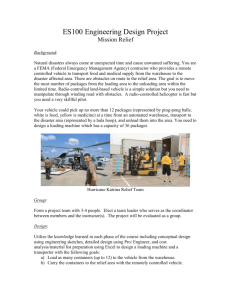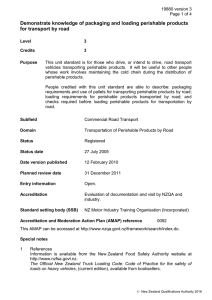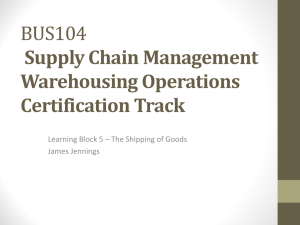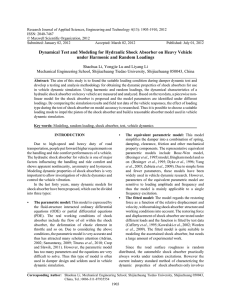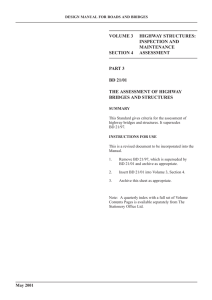Sample Refrigerated Truck Loading Log
advertisement
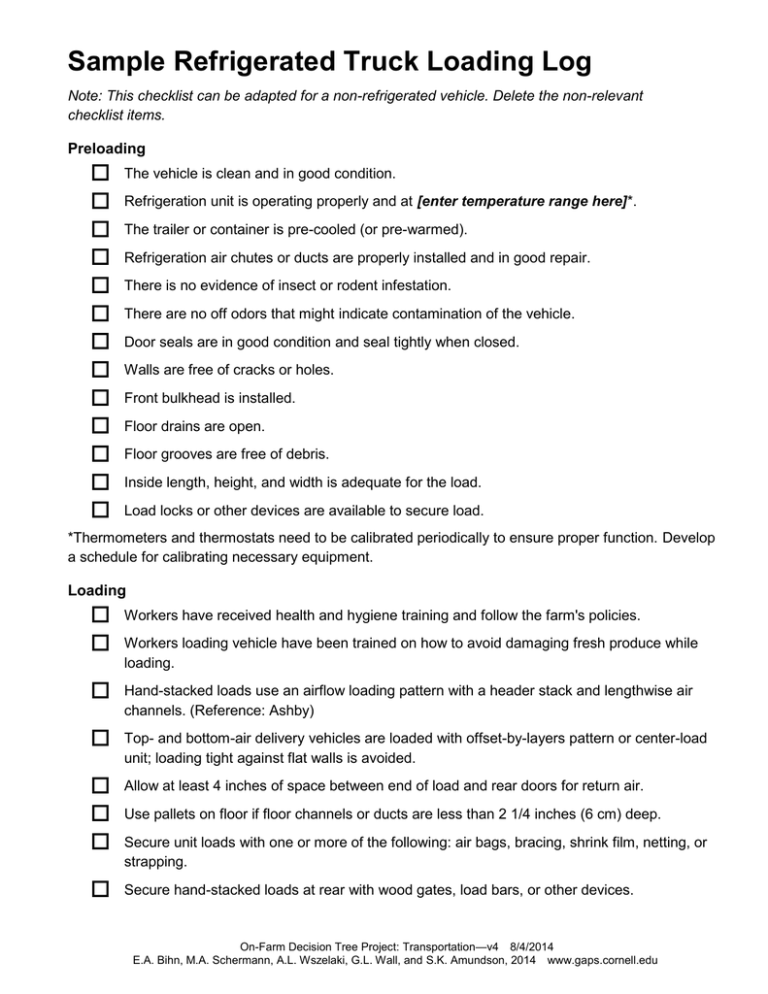
Sample Refrigerated Truck Loading Log Note: This checklist can be adapted for a non-refrigerated vehicle. Delete the non-relevant checklist items. Preloading The vehicle is clean and in good condition. Refrigeration unit is operating properly and at [enter temperature range here]*. The trailer or container is pre-cooled (or pre-warmed). Refrigeration air chutes or ducts are properly installed and in good repair. There is no evidence of insect or rodent infestation. There are no off odors that might indicate contamination of the vehicle. Door seals are in good condition and seal tightly when closed. Walls are free of cracks or holes. Front bulkhead is installed. Floor drains are open. Floor grooves are free of debris. Inside length, height, and width is adequate for the load. Load locks or other devices are available to secure load. *Thermometers and thermostats need to be calibrated periodically to ensure proper function. Develop a schedule for calibrating necessary equipment. Loading Workers have received health and hygiene training and follow the farm's policies. Hand-stacked loads use an airflow loading pattern with a header stack and lengthwise air channels. (Reference: Ashby) Top- and bottom-air delivery vehicles are loaded with offset-by-layers pattern or center-load unit; loading tight against flat walls is avoided. Allow at least 4 inches of space between end of load and rear doors for return air. Secure hand-stacked loads at rear with wood gates, load bars, or other devices. Workers loading vehicle have been trained on how to avoid damaging fresh produce while loading. Use pallets on floor if floor channels or ducts are less than 2 1/4 inches (6 cm) deep. Secure unit loads with one or more of the following: air bags, bracing, shrink film, netting, or strapping. On-Farm Decision Tree Project: Transportation—v4 8/4/2014 E.A. Bihn, M.A. Schermann, A.L. Wszelaki, G.L. Wall, and S.K. Amundson, 2014 www.gaps.cornell.edu Unloading The Bill of Lading (BOL) matches what is in the vehicle. For a refrigerated load, the load temperature is maintained in all four corners, especially at the backdoor. Unload boxes or pallets onto carts, dollies, or via forklift to designated location. Avoid placing produce boxes directly on the ground. Document delivery on shipping log sheet. The product and the pallets on which the product was shipped are in good physical condition. For refrigerated deliveries, check that the products meet established specifications for delivery—specifically temperature. This checklist is modified from information found in Ashby, B. Hunt. Protecting Perishable Foods During Transport by Truck. U.S. Department of Agriculture, Agricultural Marketing Service, September 1995, reprinted July 2006. (available Web: http://www.ams.usda.gov/AMSv1.0/getfile?dDocName=STELDEV3021003) On-Farm Decision Tree Project: Transportation—v4 8/4/2014 E.A. Bihn, M.A. Schermann, A.L. Wszelaki, G.L. Wall, and S.K. Amundson, 2014 www.gaps.cornell.edu
